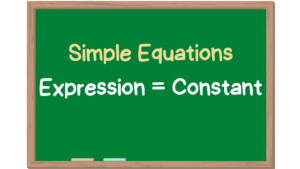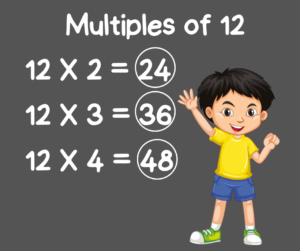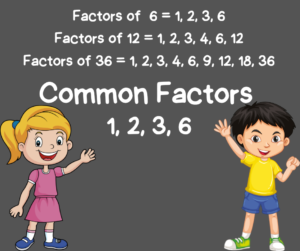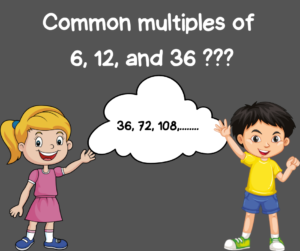Introduction
The relationship between two expressions on either side of the equal to sign is represented by an equation in mathematics. One equal symbol and one variable are used in this kind of equation. Simple equations use arithmetic operations to balance the expressions.
A simple equation is an equation that shows the relationship between two expressions on both sides of the sign. Only one variable appears in these kinds of equations, either on the first side or the other side of the equal symbol. For instance, 83 = 5 – 4z. In the provided example, the variable is z. Simple equations use arithmetic operations to balance the expressions on both sides. Linear equations in one variable are also regarded as simple equations.
Equations
Equations are relationships between two or more expressions connected by the equals sign, or “=.” Variables, coefficients, and constants are the three components of an equation.
Variables: Variables are the names given to the symbols (typically English alphabets) that are assigned to an arbitrary, unknowable value.
Coefficients: The coefficients of a term are the numbers that are multiplied by a variable or the product of two variables in that term.
Constants: Constants are the numbers that are independent of variables.
Simple Equations
A type of equation known as a simple equation compares two linear expressions with just one variable in common. Several instances of basic/simple equations are
3x + 4 = 7
4x + 5 = 3x + 8
Since many of the situations, we encounter in real life can be formulated as simple equation problems, we can use simple equations to obtain the desired results in a variety of areas of life.

Simple Equations questions
Simple equation problems, which can be represented by a simple equation to find the value of something unknown based on some given conditions, are known as simple equation questions. One such example of applying simple equations to real-world situations is provided,
Let’s say Amar and Bipin, two friends, are purchasing apples. Amar might have purchased 5 kg and Bipin 3 kg. If Amar paid Rs. 80 more than Bipin, we must determine the cost of a kg of apples. The following simple equation can be used to represent this situation:
5x = 3x + 80, where x is the price of 1 kg apples.
Solving Simple Equations
To answer questions involving simple equations, we change the equation so that the term with the variables is on one side of the equation and the term with constants is on the other. We then simplify both sides so that there is only one term on each side, one with variables and the other with constants.
The value of the variable is then obtained by simply multiplying the equation by the reciprocal of the coefficient.
Now, let’s look at some examples to help us better understand it.
Example: Solve the following simple equation, 5x – 20 = 3x + 60
Solution: Here we have 5x – 20 = 3x + 60
Adding 20 to both sides while subtracting 3x to move terms with variables to one side and constants to the other.
⇒ 5x – 20 + 20 – 3x = 3x + 60 + 20 – 3x
⇒ 5x – 3x = 60 + 20
⇒ 2x = 80
Dividing by 2 on both sides
⇒ x = 40
Simple Equation Problems
Simple equation problems are mathematical issues from the real world that are modelled by simple equations. We must first determine the number of arbitrary values present and their relationships to represent a given situation using a simple equation. If there is only one arbitrary value, it is easy to create a simple equation to describe it; however, if there are several arbitrary values, we must establish a direct relationship between them to do so.
Example: Determine whether the following scenario can be modelled as a simple equation or not. Amit is currently twice as older than his younger brother Sagar. The combined age of Amit and Sagar was 23, two years ago. Identify their current ages.
Solution: Since Amit’s age and Sagar’s age are arbitrary values, the only way we can depict this situation in a simple equation is if there is a direct correlation between their ages, which is implied by the first statement that Amit is currently twice as old as Sagar. As a result, we can express this as a simple equation problem.
Let Sagar’s present age be x years
And Amit’s present age be y years
Then, ATQ
In present, y = 2x
Also, two years ago, (x – 2) + (y – 2) = 23
Substituting y = 2x in the second equation,
⇒ x – 2 + 2x – 2 = 23
Equations in Everyday Life Examples
When a value for a quantity or identity is unknown in a real-world situation and cannot be determined by a simple mathematical operation, linear equations are used, such as when estimating future income, forecasting future profits, or figuring out mileage rates.
Here are a few real-world instances where applications of linear equations are used.
- Can be used to identify age-related problems.
- It is used to determine the distance, duration, and speed of a moving object.
- It is used to resolve problems involving money, percentages, etc.
Solved Examples
Example: Calculate the value of y from the equation: ![]() – 5 = 6.
– 5 = 6.
Solution: We will simplify the equation first by separating the variables and constants,
![]() – 5 = 6
– 5 = 6
Add 5 on both sides,
⇒ ![]() – 5 + 5 = 6 + 5
– 5 + 5 = 6 + 5
⇒ ![]() = 11
= 11
Multiply by 3 on both sides,
⇒ ![]() x 3 = 11 x 3
x 3 = 11 x 3
⇒ 11y = 33
Divide by 11 on both sides,
⇒ y = 3
Summary
Simple equations are also known as linear equations when they contain multiple variables and can be resolved using a variety of techniques. To solve problems from daily life, such as how to measure an unknown length, etc., we use simple equations. The typical method of representing the relationship between variables is through simple equations. A simple equation is a linear equation that only has one variable. Simple equations were credited to Rene Descartes as their creator. One of the foundations of algebra is simple equations.
Frequently Asked Questions (FAQs)
1. What are Linear Equations?
Linear equations are the mathematical relations that relate two expressions of degree 1 with the equal to symbol.
2. What are Simple Equations?
Simple equations are linear equations that have only one variable. Simple equations can be solved easily and are very useful in many days to day life problems.
3. What are the different methods of Solving Simple Equations?
There are two ways that we can solve simple equations. The techniques are the systematic method and the trial-and-error method.
4. What is a Rational Expression?
A rational expression is expressed in terms of the fraction of two algebraic expressions, and it also belongs to the class of simple equations.





